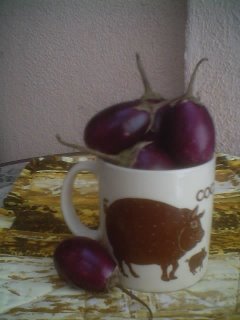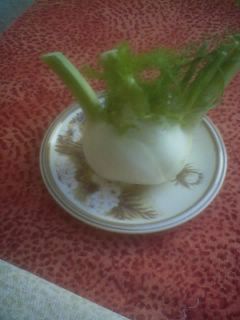Prehistoric Woman, Nhor (looking up from granite work surface toward prehistoric man as he appears at the top of the distant hill): “umh … good Mhor … green in hand … we eat good”
Prehistoric Man, Mhor (approaching prehistoric woman and holding vegetation toward her with outstretched hands): “umh … look Nhor … big green … grow good … small red”
Prehistoric Woman, Nhor (twisting off any red tuberous portions of the vegetation and tossing them onto the scrap pile in the corner of the prehistoric “cave kitchen”): “umh … good … red small … green more good”
Notwithstanding the idiosyncrasies of prehistoric grammar, syntax and reasoning – Mhor and Nhor had more in common with we modern types than we may care to admit! They
just didn’t fully appreciate beets – even though they cultivated them routinely. For years – possibly even centuries – beets were a foundation element of their diet, but they
only ate the green parts.
Time passed. In post-prehistoric times (hmmm, would that be in “historic times”?), the
red bulb of the beet was used medicinally to treat headaches and toothaches, as a tisane or tea, but not eaten. By the 16th century, though, things changed. The beet root as we know it today, round in shape and substantial, had developed. It only took another two hundred years for the rounded beets to gain any real popularity as a food!
Then, throughout Europe,
beets came into their own. In Russia, the emblematic soup
borscht was born. From Scandinavia to England, from France to Italy and beyond, the time was right. Relatively easy to grow and consumable from stem to stern (so to speak), the beet was an excellent source of nourishment for swelling peasant populations.
Perhaps this longstanding
link to peasant cooking was what once again relegated beets to the back burner, as cuisine and education “advanced” and beets were considered to be too “common” for modern times in much of the 19th (and some of the 20th) century. Thankfully, much of today’s best – and most sought after -- cooking harkens back to its peasant foundations. And, we find ourselves in a veritable
beet-historic renaissance! Beets have a new image! Everything old is not only new again, but more creative.
Like other leafy greens, beet greens are loaded with nutrients and are easily prepared in a variety of ways (see the Ingredient Sleuth’s March 17 essay re. leafy greens for preparation ideas). And today, the red (or yellow-gold, in the case of some new varieties) round roots have moved from the brined jar and aluminum can into the mainstream of cooking, even in the highest of haute cuisine restaurants.
Beets
can be used raw, as they have been for years in Italy and France. Peeled with a vegetable peeler and shredded, they are a sweet and vibrant addition to tossed salads. Or, they can be used as one component of those great, European-style composed salads, so popular in northern Europe, that feature several shredded raw vegetables, colorfully lined up side by side on an individual serving plate and topped with a vinaigrette dressing.
Beets can be
boiled, steamed, microwaved, braised or baked in much the same way as potatoes – although cooking times will be somewhat longer. Beets are done when they can be pierced easily with the point of a sharp knife. To peel – or not to peel -- the only question is WHEN (before or after cooking), because beet skins have not yet come into fashion as a food item! Scrubbing the beets, then cooking, allowing to cool slightly and then peeling is a tried-and-true method. If baking them whole, skins on, it is always a good idea to prick them several times with a fork or sharp knife, just like potatoes, before baking.
Seasonings that blend especially well with beets include mint, parsley, thyme, horseradish, dill, citrus (juice and zest), nutmeg, oregano, cinnamon, caraway, mustard and coriander. And one of my favorites is rosemary – but then again, I could probably put rosemary on chocolate pudding and enjoy it! With this array of compatible flavors, virtually everyone should be able to chose one (or more) that will “speak” to them.
If you happen to live in Europe, let’s say Italy or France or England, you probably can just pop on over to your neighborhood grocer and pick up fresh, already-cooked (or in some cases wood-oven roasted) beets. Like many root vegetables, beets really are
optimized when they are roasted. The natural sugars develop (and caramelize) by means of the exposure to roasting temperatures; dry heating also locks in the nutrition.
The following recipe for oven-roasted beets comes from
Ina Garten’s marvelous book
BAREFOOT IN PARIS: Easy French Food You CAN Make at Home (Clarkson Potter/Publishers, 2004). This dish also exemplifies the sensible recipes that fill this delightful book – real French food, that can be prepared on a regular basis, for and by real people – all with a reasonable number of ingredients and straightforward cooking techniques.
Ms. Garten writes that she believes in keeping recipes simple and, thereby, sustainable. Having moved from a career in the White House (working on nuclear energy policy) to a career as owner of the
Barefoot Contessa specialty food store in New York, she brings the sensibilities of a day-in, day-out chef to her cooking. She knows what is required, not just to fill the plates at a family dinner party, but to keep the store counters stocked with tasty food that will keep customers coming back for more. After eighteen years in the specialty food shop business, Ms. Garten has moved to the world of cookbook writing and television. Her books, "Barefoot Contessa
" programs on the TV Food Network, recipes and much more are detailed at her website:
www.barefootcontessa.com.
ROASTED BEETS12 beets
3 tablespoons good olive oil
1-1/2 teaspoons fresh thyme leaves, minced
2 teaspoons kosher salt
1 teaspoon freshly ground black pepper
2 tablespoons raspberry vinegar
Juice of 1 large orange
Preheat the oven to 400 degrees.
Remove the tops and the roots of the beets and peel each one with a vegetable peeler. Cut the beets in 1-1/2-inch chunks. (Small beets can be halved, medium ones cut in quarters, and large beets cut in eighths.)
Place the cut beets on a baking sheet and toss with the olive oil, thyme leaves, salt, and pepper. Roast for 35 to 40 minutes, turning once or twice with a spatula, until the beets are tender. Remove from the oven and immediately toss with the vinegar and orange juice. Sprinkle with salt and pepper and serve warm.
(Serves 6)
*Copyright Note: Ina Garten specifically authorized this recipe reprint, by the Ingredient Sleuth, in this posting.
---------------------------------------------------------------------------
In this mouth-watering dish, the beets’ smooth richness and the thyme’s earthy liveliness are linked to the lighthearted high notes of tart raspberry vinegar and sweet orange juice. Rich, deep flavor -- tuned to brightness as sparkly as the Eiffel Tower’s hourly light shows!
It’s time to be on the lookout -- June to October is prime beet season in North America. Early in the season, baby beets with baby leaves still attached are available and can be cooked intact, green tip to red toe – a way, I think, that Mhor and Nhor would have enjoyed them, had they only known:
“Umh … good young taste … want more … red too!” Bon appetit!














